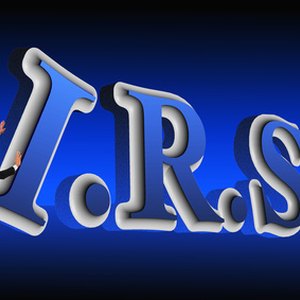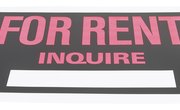
Rental property income and expenses are reportable for tax purposes, however, only the business use of the property is allowed as a deduction on Schedule E, Supplemental Income and Loss. Personal use of rental properties must be separated from business use to determine the amount of income and expenses to be included. The IRS definition for personal use is available in Publication 527 of the Internal Revenue Service. Methods for figuring the business percentage of use depend on the type of rental unit involved. Vacation homes, rooms within your home and your personal residence, if rented after moving into a new home, can all be used for personal and business purposes.
Separate Rental Unit
Determine the number of days you owned the rental property during the calendar year.
Determine the number of days in the calendar year your rental unit was used for personal reasons. Consider any half days of use as full days.
Subtract the number of personal use days from the total number of days owned during the year. The result is the total number of days the rental property was used for business purposes.
Divide the number of days used for business by the total days owned during the year. The result is a decimal number that can be interpreted as a percentage by moving the decimal point two places to the right.
Use the percentage of business use to figure the portion of yearly rental expenses that can be deducted on Schedule E.
Rental Unit as Part of Home
Figure the total square footage of your home.
Measure the room or rooms used as rental property. Multiply the length times width to get the square footage.
Divide the square footage allocated as rental property by the total square footage of the house.
Convert the decimal number to a percentage by moving the decimal point two places to the right. The result is the percentage of business use of your home.
Use the percentage of business use to figure the monthly expenses for your rental unit. Multiply the monthly amount by the number of months you owned the rental property during the tax year to figure the portion of expenses deductible on Schedule E.
Tips
The IRS allows any reasonable method for dividing expenses between personal and business use. Another common method for figuring the business portion of expenses is to divide them by the total number of rooms in the home. Multiply the expenses per room by the number of rooms used as rental property. If you are renting out part of your home, you do not have to divide expenses that belong solely to the rental part of the property.
Expenses may be deducted for the personal use of your property if you file a Schedule A, Itemized Deductions.
Warnings
Rental expenses can only be deducted up to the amount of rental income if your rental property is not held for profit. Losses cannot be carried forward to the next year. (Reference 1)
References
- Internal Revenue Service: Special Situations
- Internal Revenue Service: Publication 527 Residential Rental Property (PDF)
- Internal Revenue Service. "Know the tax facts about renting out residential property." Accessed May 9, 2020.
- Internal Revenue Service. "Topic No. 415 Renting Residential and Vacation Property." Accessed May 9, 2020.
- Internal Revenue Service. "Real Estate (Taxes, Mortgage Interest, Points, Other Property Expenses)." Accessed May 9, 2020.
- Tax Foundation. "A Tradition Unlike Any Other: The Masters Tax Exemption." Accessed May 9, 2020.
- Internal Revenue Service. "Publication 527: Residential Rental Property." Accessed May 9, 2020.
- Internal Revenue Service. "Publication 527: Residential Rental Property." Accessed May 9, 2020.
- Internal Revenue Service. "Publication 527: Residential Rental Property (Including Rental of Vacation Homes)," Page 17-18. Accessed May 9, 2020.
- Internal Revenue Service. "Publication 527: Residential Rental Property." Accessed May 9, 2020.
Tips
- The IRS allows any reasonable method for dividing expenses between personal and business use.
- Another common method for figuring the business portion of expenses is to divide them by the total number of rooms in the home. Multiply the expenses per room by the number of rooms used as rental property.
- If you are renting out part of your home, you do not have to divide expenses that belong solely to the rental part of the property.
- Expenses may be deducted for the personal use of your property if you file a Schedule A, Itemized Deductions.
Warnings
- Rental expenses can only be deducted up to the amount of rental income if your rental property is not held for profit. Losses cannot be carried forward to the next year. (Reference 1)
Writer Bio
Lara Lawrence has been writing professionally since 2008, with articles appearing in “The Pioneer East." Lawrence is a professional pianist and has been teaching piano for more than 20 years. She is a member of the National Federation of Music Clubs and holds a Bachelor of Science in business administration from Central Michigan University.

